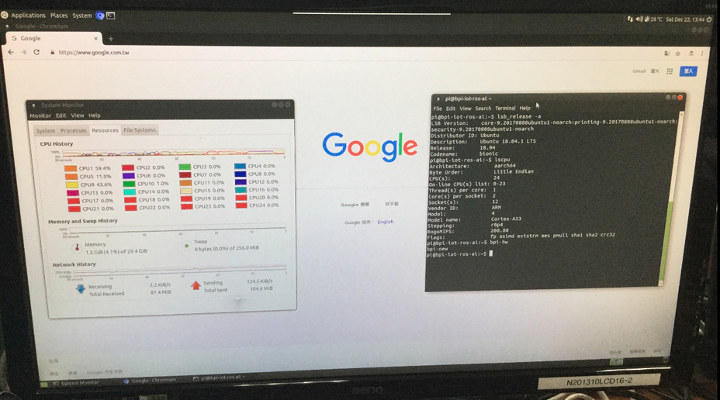SinoVoIP has been offering Banana Pi single board computers for several years. Their boards are generally based on Arm processors, offered at a relatively decent price, although not as quite as good value as FriendlyELEC and Orange Pi ones. The company is also known for providing subpar documentation and firmware images, but a fairly active community still formed around their boards 🙂
The company has now demonstrated something a little different with a 24-core Arm server that should eventually be sold as a Banana Pi server board or actual server, as the full details are yet to be known.

We did not get a glimpse at the actual hardware, but the blurry photo above gives some clues. We have 24-core Arm Cortex A53 processor with 32GB RAM (29.4GB seen by the OS) running Ubuntu 18.04.1 LTS with MATE desktop. There aren’t that many 24-core Arm Cortex A53 processors, so unless the company is using an announced processor, it has to be SocioNext SC2A11 processor also found in Linaro Developer Box.
The video below shows the server’s 24 cores fully utilized while building Linux 4.19 kernel.
Nora, Project Manager for Banana Pi at Foxconn, provides a few more details in LinkedIn comments and we know the board supports NVMe storage, the company tested TensorFlow under Docker, Raspbian, and ROS Melodic Morenia. We’ll likely have to wait a few more months to find out details about hardware, price and availability.

Jean-Luc started CNX Software in 2010 as a part-time endeavor, before quitting his job as a software engineering manager, and starting to write daily news, and reviews full time later in 2011.
Support CNX Software! Donate via cryptocurrencies, become a Patron on Patreon, or purchase goods on Amazon or Aliexpress




